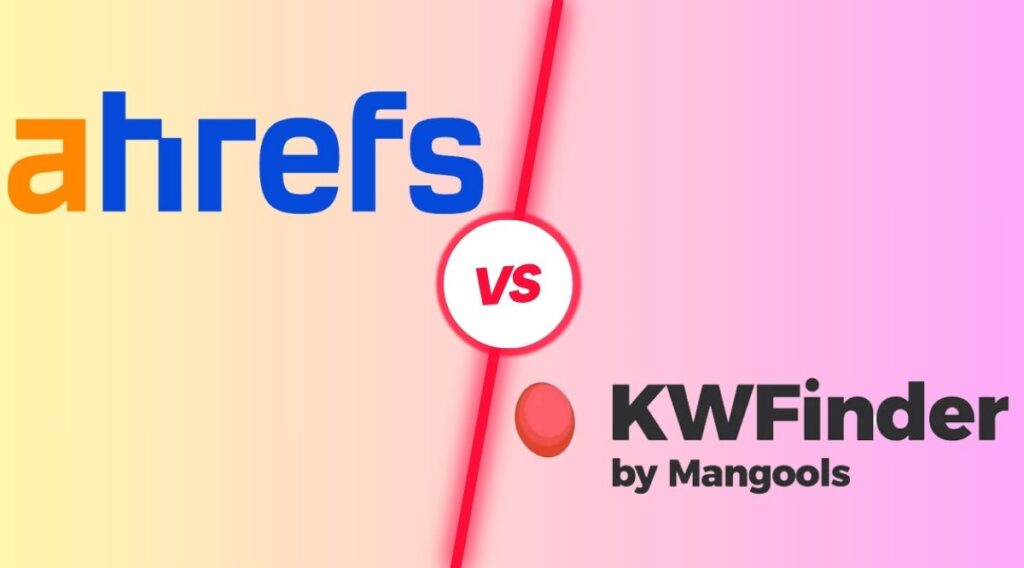In today’s competitive e-commerce world, visibility can make or break a business. Millions of sellers compete on Amazon, and getting products noticed among countless alternatives is no easy task. That’s where Amazon’s advertising platform steps in. If you’re wondering what is Amazon PPC and how it can help you scale your online business, this guide will cover everything you need to know. From how the system works, to campaign types, strategies, and mistakes to avoid, this article will give you a complete understanding of Amazon’s pay-per-click advertising model.
Understanding Amazon PPC
At its core, Amazon PPC is an advertising system that allows sellers to promote their products within Amazon’s marketplace. Instead of paying for impressions, sellers only pay when a shopper clicks on their ad. This ensures that ad spend goes toward engaged potential customers rather than just exposure.
Unlike traditional advertising where ads may be shown randomly, Amazon’s system is highly data-driven. It relies on keyword targeting, search queries, and bidding strategies to determine which ads appear. The aim is not only to help sellers gain visibility but also to enhance the shopping experience by connecting buyers with relevant products.
Why Amazon Introduced PPC
Amazon’s marketplace has grown rapidly, hosting millions of sellers and billions of products. For customers, this can be overwhelming, and for sellers, it means standing out is increasingly difficult. To solve this, Amazon created an advertising system that benefits both sides:
- For Sellers: It provides an opportunity to place products in front of highly relevant shoppers.
- For Shoppers: It improves product discovery by showing relevant ads alongside organic results.
- For Amazon: It increases revenue while maintaining a customer-centric shopping experience.
How Does Amazon PPC Work?
Amazon’s advertising model functions like a real-time auction. Sellers bid on keywords that shoppers use in their searches. When a customer types in a phrase, Amazon’s system evaluates multiple factors—such as relevance, bid amount, and product quality score—to determine which ad will appear.
Here’s the basic flow:
- A shopper enters a search query.
- Amazon checks which ads are eligible for that query.
- Ads enter a bidding auction.
- The winner’s ad is displayed, usually above or within organic results.
- The advertiser pays only if the shopper clicks on the ad.
This pay-per-click model ensures that costs are tied to actual engagement, rather than just visibility.
Types of Amazon PPC Campaigns
Amazon provides multiple ad formats to suit different goals. Each campaign type serves a unique purpose:
1. Sponsored Products
These are the most common and widely used ads. They appear in search results and product detail pages, blending seamlessly with organic listings. Sponsored Products are ideal for driving direct sales of specific products.
2. Sponsored Brands
These ads showcase a seller’s brand logo, a custom headline, and multiple products. They typically appear at the top of search results, giving brands visibility and helping build recognition. Sponsored Brands are particularly useful for sellers looking to establish authority and promote multiple items at once.
3. Sponsored Display
Sponsored Display ads target shoppers both on and off Amazon. They can appear on competitor product pages or even across external sites partnered with Amazon. This format is excellent for remarketing campaigns and reaching audiences beyond the marketplace.
Also Read: What Is Sales Funnel in Digital Marketing Complete Guide
Benefits of Using Amazon PPC
Amazon’s advertising platform offers several advantages for sellers who invest in it strategically:
- Enhanced Visibility: Ads position products in front of the right audience at the right time.
- Increased Sales: With targeted placement, ads often lead to higher conversions and direct sales.
- Brand Awareness: Sponsored Brands and Display ads strengthen recognition and trust.
- Improved Organic Ranking: Successful campaigns can boost organic rankings since sales velocity is a major ranking factor.
- Scalability: Campaigns can be scaled up or down depending on goals and budget.
Bidding Models and Targeting Options
Bidding Strategies
Amazon offers flexible bidding models:
- Dynamic Bids – Down Only: Reduces your bid when a conversion is less likely.
- Dynamic Bids – Up and Down: Increases or decreases bids depending on likelihood of a sale.
- Fixed Bids: Keeps your bid consistent, regardless of conversion chances.
Targeting Methods
Sellers can choose between:
- Automatic Targeting: Amazon decides which keywords and placements are most relevant. Great for beginners.
- Manual Targeting: Sellers select keywords and match types. Offers more control but requires research.
Keyword Match Types
When setting up a manual campaign, sellers choose keyword match types to determine how closely a shopper’s search must align:
- Broad Match: Ads appear for related phrases, synonyms, and variations.
- Phrase Match: Ads show when the search includes the exact phrase with additional words before or after.
- Exact Match: Ads trigger only when the exact phrase is used.
Each match type plays a role in balancing reach and precision.
How to Set Up an Amazon PPC Campaign
 Amazon PPC explained with strategies for growth
Amazon PPC explained with strategies for growth
Launching a campaign in Seller Central involves several steps:
- Log in to your Seller Central account.
- Select the product(s) you want to advertise.
- Choose campaign type (Sponsored Products, Brands, or Display).
- Set targeting method (manual or automatic).
- Define daily budget and bids.
- Add keywords (if manual targeting is selected).
- Launch the campaign and monitor performance.
The process is straightforward, but the challenge lies in ongoing optimisation.
Best Practices for Success
To get the most from Amazon’s advertising system, sellers should adopt these best practices:
- Start with Automatic Campaigns: Allow Amazon to gather data on relevant keywords before moving to manual targeting.
- Optimise Keywords Regularly: Add high-performing keywords and remove underperforming ones.
- Use Negative Keywords: Prevent ads from showing on irrelevant searches to save budget.
- Test Different Bids: Adjust bids strategically based on product margins and competition.
- Leverage Analytics: Regularly check reports to understand click-through rates, conversion rates, and ACoS (Advertising Cost of Sales).
- Balance Budget Allocation: Focus more resources on campaigns delivering the best ROI.
Common Mistakes to Avoid
While the system offers significant opportunities, many sellers fall into traps that waste ad spend:
- Ignoring Campaign Reports: Data is crucial. Failing to analyse reports leads to blind decision-making.
- Overbidding on Broad Keywords: This can drain budgets quickly with little return.
- Neglecting Product Listings: Even the best ad won’t convert if the product page is poorly optimised.
- Setting and Forgetting: PPC requires consistent monitoring and adjustments.
- Lack of Strategy: Running ads without a clear goal—whether it’s brand awareness, sales, or ranking—often results in wasted investment.
How Amazon PPC Impacts Organic Ranking
Amazon’s algorithm considers sales velocity as a ranking factor. When ads drive sales, it indirectly boosts a product’s organic visibility. Over time, successful campaigns not only generate paid traffic but also improve free traffic, creating a cycle of growth.
The Role of PPC in a Wider Marketing Strategy
Amazon’s advertising system should not exist in isolation. It works best when combined with:
- Optimised Product Listings: Clear titles, bullet points, descriptions, and images.
- Competitive Pricing: Ads won’t convert if the product is overpriced.
- Customer Reviews: Social proof increases trust and conversion rates.
- External Traffic: Driving traffic from social media or Google Ads can further strengthen results.
When integrated into a broader digital marketing plan, Amazon’s PPC becomes a powerful growth driver.
Read More: Why Digital Advertising Matters in 2025
Future of Amazon Advertising
As e-commerce continues to expand, Amazon is likely to innovate further in its ad offerings. Trends to watch include:
- AI-Powered Targeting: Smarter algorithms to match ads with customer intent.
- Video Ads: Growing demand for interactive ad formats.
- Increased Competition: More sellers will use PPC, making strategic optimisation even more critical.
- Voice Search Integration: As voice shopping rises, ad placements may evolve to fit spoken queries.
Staying updated with these trends will be essential for long-term success.
Conclusion
So, what is Amazon PPC and why does it matter? It’s a performance-based advertising system designed to help sellers get products in front of the right audience, boost visibility, and drive sales. By understanding campaign types, bidding strategies, and optimisation practices, sellers can transform their business outcomes.
The key lies in treating Amazon’s advertising not just as a tool, but as a strategic investment. When executed well, it not only generates direct sales but also improves organic rankings and strengthens brand presence. For businesses committed to growth in the competitive e-commerce landscape, Amazon’s advertising platform is no longer optional—it’s essential.
Frequently Asked Questions (FAQs)
Is Amazon PPC worth it for small sellers?
Yes, it can be highly effective for small sellers because it levels the playing field by providing instant visibility. With the right targeting and budget control, even smaller businesses can compete against larger brands. The key lies in optimising campaigns to maximise return on investment.
How much budget should I start with for Amazon PPC?
There is no fixed amount, but many sellers begin with a modest daily budget to test performance. Starting small allows you to gather data on what keywords and campaigns convert best. Once insights are clear, you can scale up for stronger growth.
How long does it take to see results from Amazon PPC?
Results vary depending on competition, product quality, and optimisation. Many sellers start seeing traffic and early sales within days of launching a campaign. However, consistent monitoring and adjustments over a few weeks usually bring more reliable results.
Can Amazon PPC improve my organic rankings?
Yes, successful campaigns often lead to higher sales, which is a key factor in Amazon’s ranking algorithm. As your sales velocity increases, your product naturally gains better organic visibility. This creates a cycle where ads support long-term organic growth.
What are the most common mistakes in Amazon PPC campaigns?
Overspending on broad keywords, neglecting campaign reports, and failing to optimise product listings are common pitfalls. Many sellers also set campaigns and leave them unattended, wasting ad spend. Regular adjustments and clear strategies are vital for success.

 Amazon PPC explained with strategies for growth
Amazon PPC explained with strategies for growth








